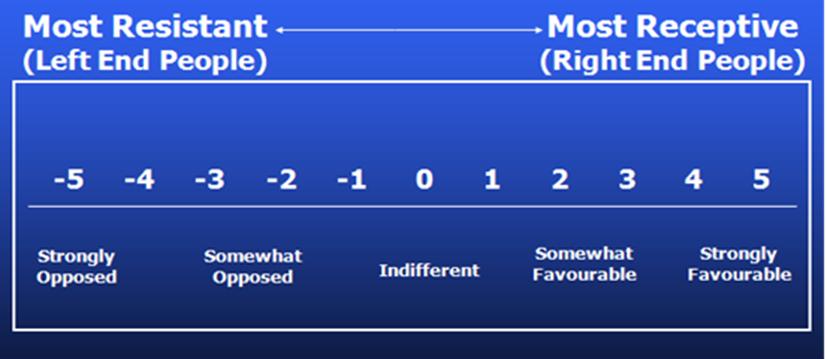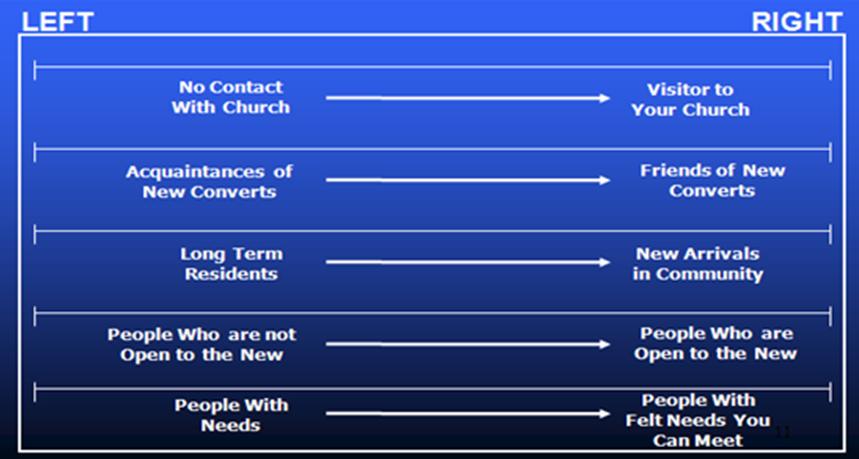Numerous studies have been done over the years on what is called the resistance /receptivity axis and how it should affect the way in which a church interacts with its community.
The resistance/receptivity axis is a helpful tool for understanding why people are more or less open to accepting Jesus and becoming His disciples at a given point in time.
The Principle – Individuals, families, particular segments of society, communities and even nations respond to the message of the gospel in a changing pattern of resistance and receptivity.
Jesus told us to “look on the fields that were white to harvest”. A simple understanding of this text would lead to at least these conclusions:
- There are some fields that are not yet “white to harvest”.
- Paying attention to the groups or peoples that are “white to harvest” is good stewardship of our time and resources.
- God is at work in the world and Jesus as the builder of His church is supernaturally preparing people for us to minister to.
- It is clear that Jesus desires results not simply a good effort.
Every non-believer can be located somewhere on this resistance/receptivity axis. This continuum describes a person’s openness to becoming a follower of Jesus. Some people are receptive—the good soil (Matthew 13:1–9). Others are resistant to the gospel—the rocky soil. When Jesus concluded this parable with, “he who has ears, let him hear,” He was suggesting that the good news would not be heard and received equally. We are called to identify those who will hear, listen, and respond.
Not only does this resistance/receptivity axis help us understand that people are at different places in their readiness to respond to Jesus but they also move back and forth on this axis over the course of their lifetime. Sometimes a person will be receptive to the gospel, while at other times he or she will be resistant. A person who is resistant to the gospel today may be receptive in the future.
Robert Pierson rightly observes: “People most often make decisions to follow Jesus when they are going through transitions. Most do not make decisions about new commitments and directions in their life when everything is going well. We make those decisions when we are in the midst of stress and difficulty. When the church is there to help and share the gospel at the point of their greatest need, people respond, because those are the times people are the most open” Needs-Based Evangelism, Abingdon Press, 2006, p. 28).
Ways to determining receptivity:
- Spend some time looking into those you know are already receptive people, families, or ethnic groups in your community. Ask why they are receptive.
- Take a fresh look at your community. This can be done through demographic studies usually available through government offices or talking to real estate agent.
If we were to use a simple harvest principle, a farmer would not put workers in the fields where the harvest is still green or even where the harvest is partially ripe, but he would put most of his workers in the fields where the harvest is fully ripe and demanding harvest now. Where are you putting your workers?
(For more on applying the principle of receptivity in your church, see “The Receptivity Rule” in What Every Pastor Should Know, by Gary McIntosh & Charles Arn, Baker Books, 2013.)

Colin Noyes is the Director of ResourceZone International. He has thirty-five years of ministry experience as a pastor, college lecturer and consultant/coach to consultants, denominational leaders and local church pastors. He can be reached at info@resourcezoneinternational.com






Comment here